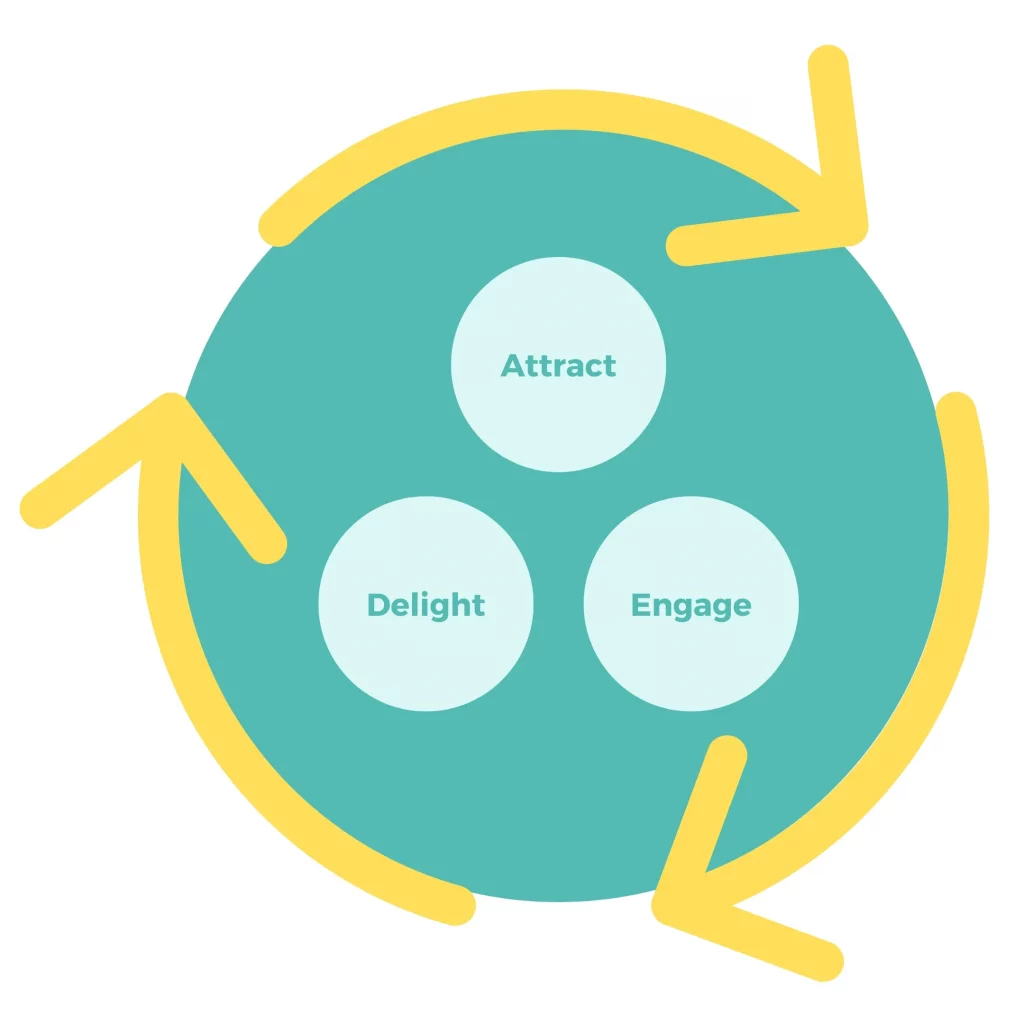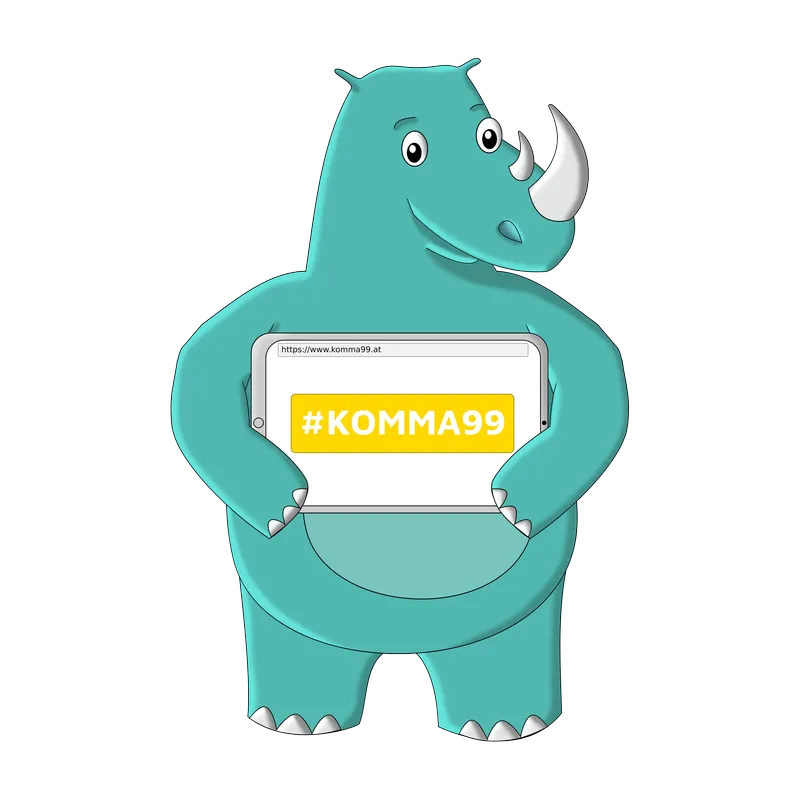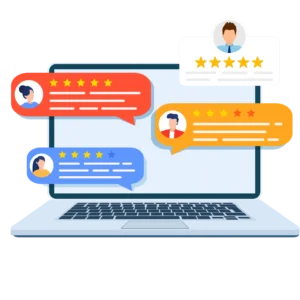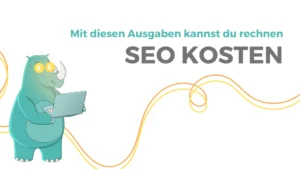Forms, goals and measurement of content marketing simply explained
Content marketing is a branch of online marketing that involves the development and distribution of valuable and relevant content. The clear goal of content marketing is to reach a specific target group and to bind them to the brand through target group-oriented content.
Companies that sell their services or products online can move into the focus of their target group through targeted content marketing and thus establish digital touchpoints. Since the market is huge, especially on a digital level, it is all the more important to stand out from the competition and convey added value and clear benefits for potential customers. Content marketing is therefore a promising way to attract the attention of the target group and gain their trust.
Many areas of online marketing, such as search engine optimization (SEO) or newsletter marketing, are closely linked to content marketing. Content marketing stretches like a great veil over many areas.
In this article, you'll learn exactly what content marketing is and which principles this part of (online) marketing follows. I'll also give you an overview of possible goals, the process behind them, and the evaluation of your content marketing strategy.
I hope you enjoy reading it!
What is content marketing?
In short, content marketing is a branch of marketing in which a content marketing strategy is created and executed in order to produce relevant and high-quality content to attract the desired customers. At this point, we are already faced with the first and most important prerequisite for being able to start with content marketing in the first place -... Who is actually your target audience?
To do this, there are a variety of ways to define a target audience - in our blog article on the Customer Journey we also talk about the word "Buyer Persona".
To define a buyer persona, you can ask yourself the following questions:
- How does our product/service stand out from the crowd?
- What does our company stand for?
- What benefits do our products/services deliver?
- What benefits do our products/services bring to our customers?
Once you have clarified these questions for yourself and your company and determined your target group, you can theoretically start planning your content marketing strategy. We will discuss the exact principles and forms behind this in more detail in the course of this article. To start with, it is important that you understand what content marketing is based on.
The 4 pillars of content marketing
The target group
As already mentioned, the target group is the be-all and end-all for your content strategy. High-quality content is good - but if it only reaches people who have no contact with your company, it won't do you much good. So before you start your strategy, be sure to define a buyer persona.
The strategy
Behind every goal is a detailed plan to achieve it. Depending on the company, the content marketing strategy can go in many different directions. Perhaps it is relevant for your company to focus on social media platforms such as Facebook or Instagram, or perhaps to operate a blog on its own website. Finding a suitable strategy requires a lot of research and planning. However, it is precisely this detailed content planning that is necessary to achieve pre-defined marketing goals. If you want to learn more about the Customer Journey to get support and inspiration for your strategy development, then read here to.
The implementation
The finely crafted content marketing strategy now needs to be implemented by professionals. Whether you have people on your team or hire an outside agency to do it for you, let them help you create the content.
The profit
Before creating your content marketing strategy, it was necessary to set goals on which to base each step. These goals will often revolve around profit or more reach. It's important to always keep your goals in mind and know if your solution path will bring the desired profit and what adjustments need to be made.
The emergence of content marketing
Marketing has been around forever. Whether it's big canvases, advertising on products, or ads in magazines. With the rise of the Internet, marketing has gained another form - online marketing. Since then, companies have been using the Internet, search engines (like Google), and social media to produce content that their ideal customers love and become emotionally attached to the company - this is where content marketing comes in.
It's not for nothing that online marketing circles say "content is king/queen". Since the term content marketing was defined back in 2007, there are an incredible number of companies that try to inspire trust with their content. For example, LinkedIn offers a blog platform where members can publish high-quality blog posts. This has greatly expanded and established LinkedIn's digital library. But Coca-Cola, for example, has also managed not only to retain their customers through targeted product marketing, but their digital magazine offers visitors the opportunity to interact and share stories.
So you see - good content and good content marketing bind your (potential) customers to you, no matter what industry you come from. It's been that way for a long time and will most likely stay that way for a long time.
The principles of content marketing
Before we get to the different forms of content marketing in this article, I'd like to explain to you in more detail what the difference is between content marketing and the classic advertising we know from our everyday lives.
Maybe that tells you "Push" principle something - you're watching TV or on social media and suddenly an ad interrupts you. Of course, the target group is also taken into account here, but basically you're not looking for advertising, because it finds you.
At "Pull" marketing it's a little different. Your users are looking for the solution to their problem and come across your blog or other content on your website or social media profile that satisfies their needs. With a well-designed content marketing strategy, you're implementing what's called "pull" marketing - your potential customers are looking for a solution to a problem, come across your content and the information in it, and ideally use your company's products or services.
As you can see, your individual target audience always plays a huge role in content marketing. If you don't optimize your content to answer the questions of your potential customers, even the best content will be lost. To turn the intention to search for information into the need to purchase something, you can apply the principle of the inbound method.

The inbound method consists of three steps. First, you attract your potential customer base and provide them with solutions and information (content). Then the interaction begins - in the course of the first step, the user may have signed up for a newsletter from you through strategically placed call-to-actions or downloaded a document on your website. In return, the potential customer has left his e-mail address, which means that he will continue to be contacted by your company in the form of E-mail Marketing is provided with interesting information. Finally, in the third step, you build a relationship with your customer base. you inspire him and he builds trust in your company through successful content marketing.
Of course, there is much more to this whole process than just the outline of these three steps, but this will give you a good understanding of the processes behind successful inbound marketing using content marketing. At the same time, the content marketing strategy always depends on the individual company. For one, newsletters may work, for another, a social media strategy with appropriate content is crucial. Yet another company may benefit from a mix of different marketing measures such as SEO, which also includes parts of content marketing.
If you are not so sure yourself which marketing measures you should implement, then you can always turn to a Agency set, which will help you define your ideal customers, implement a strategy, and measure and achieve your goals well.
Forms of content marketing
We've already found out quite a bit about content marketing in this article, but we haven't yet defined exactly what can actually be used as content. You've heard that blogs or social media posts are content - but generally speaking, content is used in divided into three typical sections, which can be combined with pleasure: Texts, images and videos.
Below, I'll list for you the wide range of different content types. Which one you choose for your company has to do with you individually - not every form of content fits every company.
Advisor
Guidebooks are usually about a topic and possible solution steps. The best way to get a guidebook to your desired customers is to use the Search engine optimization (SEO) where you optimize for a suitable keyword in order to be found on search engines such as Google.
Blog
Similar to a guidebook, a blog article deals with a topic - this can also be treated subjectively or, as here, you pass on information and expertise. Again, SEO and also newsletter marketing is a good method to make the blog visible for the desired customers.
Lexicon/Glossary
In addition to a blog or a guidebook and specifically when your industry wants to communicate complicated topics to a target group, a glossary or an encyclopedia can be established. Here, individual terms of the industry are explained in detail, which can then also be linked in the blog or guide.
E-Book
In an e-book, a (scientific) topic is analyzed and treated in great detail. The practical thing about an e-book: you can supplement the content with links (to your blog or website, for example).
Whitepaper
Similar to the e-book is the white paper, which usually deals with a specific topic and points to possible solutions.
Infographics
In addition to blogs, glossaries, e-books, etc., infographics can be used to explain complicated issues in a simple way. A practical extra: generate social media posts with your infographics for even more reach.
Studies
Through specific studies, you can not only convince your target group of your professional approach, but also build trust. Not every company can conduct studies, so feel free to refer to existing studies in your content.
Newsletter
As already mentioned, newsletters are a type of content that require some interaction between the potential customer and your company beforehand. With newsletters you can optimally bind your customers to your company and build trust in the long term.
Podcasts
Company videos
Social media postings
Checklists
and more
These different forms of content summarize only a selection of possible content in content marketing. From YouTube videos to photo spreads and personal stories, the sky's the limit.
The process behind content marketing
We now know roughly how the process behind content marketing works: Target group analysis - strategy - content creation (see content forms) - measurement (at the end in the article).
Once you've defined your ideal client and mapped out a strategy, you may think to yourself, how can you manage to create so much content on the side and still have time to do what you do best? Don't worry - you don't have to reinvent the wheel, and not every piece of content has to represent a unique idea.
In practice, it makes the most sense to reuse your content. That means you take care of a "big content" and use it for your other channels in smaller portions. The best way to show you how I mean this is to use examples:
| Example 1:
Your company offers insurance services. As "big content" you write a detailed blog article based on one keyword, in which you cover many different areas. From this big sprawling blog article about insurance, you pull a lot of technical terms, which in turn you can use as a basis to fill your glossary. For social media, you then use infographics from the blog article or individual sentences that you present graphically. In your newsletter, you refer to the blog. Perhaps you also record a podcast in which you reproduce the blog in a few parts (for customers who prefer to listen rather than read). |
| Example 2:
Your company sells bikes. For your "big content" you shoot a one-hour video in which you explain step-by-step how to prepare your bike for the summer. From this video, you take 10 clips that you prepare as reels for Instagram and Facebook. You might also write a blog article using screenshots from the video. Based on the video, prepare a checklist that users can download from your website if they provide their email address - this way you'll have new prospects for your newsletter at the same time, to whom you can then send the best gadgets for summer cycling. |
As you can see, the content marketing in both examples is based on an initial piece of content that has been split into smaller pieces of content. This way you can save yourself time and energy, but still play out unique content to your (potential) customers.
If the effort is still too much for you, there are agencies like us that take care of your visibility and strengthening your brand -. you don't have to master content marketing alone.
Possible goals for content marketing
Just like the forms of content and the strategy behind it, the goals can vary from industry to industry. Possible goals you want to achieve with your content marketing can be:
- Conversions
With the right content, more visitors come to your website, who optimally stay on your website and purchase products or services there.
- because
Through SEO you can optimize your content for specific keywords in Google and achieve sustainable visibility on the search engine results page (SERP).
- Customer loyalty
As mentioned in this article, an exciting blog article or an inspiring social media post will encourage customers to follow you or to leave their email address. This way, your customers will be informed again and again and will remain loyal to you.
- New customers
Of course, one goal of content marketing can be to generate new customers who have found you through your content. However, for targeted new customer acquisition, I recommend that you focus on inbound marketing.
- branding
Finally, it can be a goal to strengthen your branding and develop a recognition value through the visual language or your writing style. In addition, your (potential) customers get to know you well through photos and videos and associate your brand with you.
Measuring performance in content marketing
You've created a content marketing strategy and are implementing it successfully, but don't really know if all the effort is paying off? The only way to find out is to regularly monitor and measure your content marketing strategy.
Depending on whether you share content through your website, social media, or other platforms, the analysis is done differently. For websites, there are many tools (Google Analytics, Matomo,...) that show you through which pages your visitors entered, how long they stayed and what the bounce rate is. Social media channels like Instagram and Facebook offer the Meta Business Suite for analysis, other channels have their own analytics programs.
In our online marketing agency, we always send our clients a monthly reporting to see how well the new content has performed and where optimization is needed to rank even better and get more visibility. The monthly interval is optimal because it leaves enough room for developments, but you can also intervene in time should a strategy not work as well as planned.
Conclusion: Content Marketing is king/queen
In this article, you've gotten an overview of the areas you need to consider if you want to be successful at content marketing. Define the target audience - develop a strategy - implement your plans - measure your progress.
As an online marketing agency with a focus on SEO, we know exactly how important optimized content across various channels is for businesses. If you need support in the development of content and optimization with SEO measures, then feel free to contact us!













